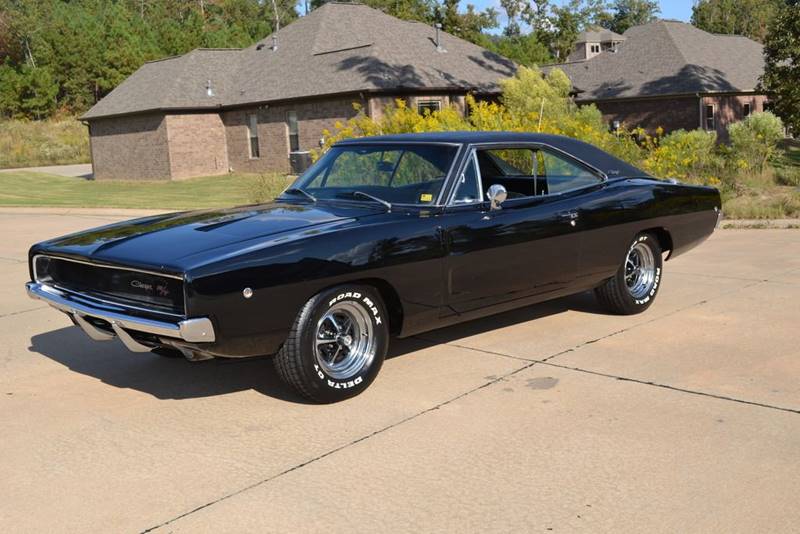
“What a great shape to be in!” 1968 Charger sales brochure
- 1968 marked the introduction of the second-generation Chargers, which would last through the 1970 year model.
- Production was up more than 500 percent from the 1967 models.
- The R/T package made its debut this year.
Muscle Car Specifications
The second-generation Chargers feature the body style that comes to mind of most people when they hear the word Charger. Sure, this may in part come from their famous TV placements (“Dukes of Hazzard”), but Edmunds offers a simpler explanation: “this is the best-looking car the Chrysler Corporation ever produced… this Coke bottle-shaped Charger wasn’t just beautiful – it was perfect.”
Some praise for a car that had barely sold 15,000 units the previous model year. But it also was well worth it. The completely redesigned car went from a fastback to a semi-fastback shaped, which better suited its large dimensions. And though the wheelbase was 117 inches like it had been since the Charger was introduced, the 1968 model was 208 inches long, 4.4 inches longer than the previous versions. But the new styling didn’t make it appear larger and, most importantly, it never felt awkward.
Inside, the car was completely changed, as well. While the first-generation models had uniquely included four bucket seats, a traditional back bench was used for the new models. The unique dashboard controls that glowed blue-green during the first two year models of the cars were replaced by more conventional controls, and the tachometer was made optional instead of being a standard feature, but these are two of the only downsides of the new models.
The R/T (Road/Track) package was introduced for 1968 and was known as part of Dodge’s “Scat Pack” line, and also were available as special models of the Coronet, Super Bee and Dart. Importantly for the Charger, the car came standard with the 440 Magnum engine which produced 350 horsepower. The car also featured special “bumble-bee” stripes, which were two thin stripes that surrounded two thicker stripes.
Though the looks of the car were dramatically different, the performance options under the hood stayed relatively consistent to the previous Charger models. Base models included a 318 CID V8 that produced 230 horsepower, and this could also be upgraded to a 2-barrel or 4-barrel version of the 383 CID V8 rated at 290 and 330 horsepower, respectively. But as it had been since the introduction of the Charger, the top of the line option was the 426 CID Street Hemi, which was rated at 425 horsepower.
And according to sales, the public loved the new Charger. Total production for the model year was 96,100, compared to 15,788 the year before.
1968 Dodge Charger
Despite the new look, the base price for the Charger decreased from the year before to start at $3,040. Standard features included full carpeting, a three-spoke steering wheel and the concealed headlights that had become a trademark for the Charger.
1968 Dodge Charger R/T
The R/T package added nearly $500 to the base price of the car, and more than 17,000 R/Ts were produced. In addition to the standard Magnum engine, the R/T package also included an automatic transmission, dual exhaust and a special handling package.
Muscle Car Competition
Though the term muscle car can define a wide scope of car,s the term as is commonly used today describes a slew of powerful mid-sized cars that were clamoring for space on American roads in the late 1960s and early 70s. It’s a good thing that Dodge introduced such a good version of the Charger in 1968, because the muscle car era was getting ready to go into its peak. Ford introduced the Torino name that year to high sales, and sales of the Mercury Cyclone were rising, as well. And the competition would only continue to grow in the coming years.
Engine Specifications
| Type | Size | Carb | Horse Power | Tourqe |
|---|---|---|---|---|
| I6 | 225ci | 1x1bbl | 145 hp @ 4000 rpm | 215 lb-ft @ 2400 rpm |
| Standard | 318ci | 1x2bbl | 230 hp @ 4400 rpm | 340 lb-ft @ 2400 rpm |
| V8 | 383ci | 1x4bbl | 330 hp @ 5000 rpm | 425 lb-ft @ 3200 rpm |
| V8 | 383ci | 1x2bbl | 290 hp @ 4400 rpm | 390 lb-ft @ 2800 rpm |
| Hemi | 426ci | 2x4bbl | 425 hp @ 5000 rpm | 490 lb-ft @ 4000 rpm |
| V8 | 440ci | 1x4bbl | 375 hp @ 4400 rpm | 480 lb-ft @ 3200 rpm |
Performance Statistics
| 0 to 60 mph | Quarter Mile | Engine | Source |
|---|---|---|---|
| n/a | 13.9 sec @ 104.9 mph | 426ci/425hp | Popular Hot Rod |
| n/a | 13.5 sec @ 105.0 mph | 426ci/425hp | Car & Driver |
| 6.0 sec | 13.5 sec @ 101.0 mph | 426ci/425hp | MCR |
| 6.5 sec | 14.9 sec @ 95.0 mph | 440ci/375hp | Motor Trend |
| 7.2 sec | 14.4 sec @ 98.0 mph | 440ci/375hp | Hot Rod 10/67 |
A True Icon
The ’68-’70 Chargers are some of the best looking cars to ever come out of Detroit. I own a first generation Charger that we are building into a gasser and I actually prefer the boxy lines of the ’66-’67 Chargers to the second generation cars, but not by much. The Second Gen Chargers are the movie bad guy/tough guy rides with everybody from Blade to Frank (Blue Velvet) to the hit men in Bullitt driving one. One issue with the article above- the 1968 Charger did not have “dual Corvette-inspired taillights.” Both cars appeared with similar dual flat circle tail light designs in 1968. Now excuse me while I go and watch my DVD of Bullitt- I love that film!
A True Icon
The ’68-’70 Chargers are some of the best looking cars to ever come out of Detroit. I own a first generation Charger that we are building into a gasser and I actually prefer the boxy lines of the ’66-’67 Chargers to the second generation cars, but not by much. The Second Gen Chargers are the movie bad guy/tough guy rides with everybody from Blade to Frank (Blue Velvet) to the hit men in Bullitt driving one. One issue with the article above- the 1968 Charger did not have “dual Corvette-inspired taillights.” Both cars appeared with similar dual flat circle tail light designs in 1968. Now excuse me while I go and watch my DVD of Bullitt- I love that film!
68 charger fine lines with the round mucsle car ta
68 charger is my favorite collector car not the fastest but does get the most attention from the public they go nuts over it dont ask me why ,and im not a mopar nut . camaro mustang man
Big And Powerful
These cars were big. Park beside one today (just be careful and don’t ding it) and you will be amazed about just how large they are. Thankfully for the muscle car lover, the engines were large and powerful also. The 383ci and the 440ci could really motivate the car. Sick a Hemi inside and keeping the wheels from spinning became a real problem. The amazing thing about this classic Dodge Charge is that there was one for everybody, everything from a grocery getter to a drag racing demon. The choice was yours and regardless of the version chosen the customer got a good looking car.

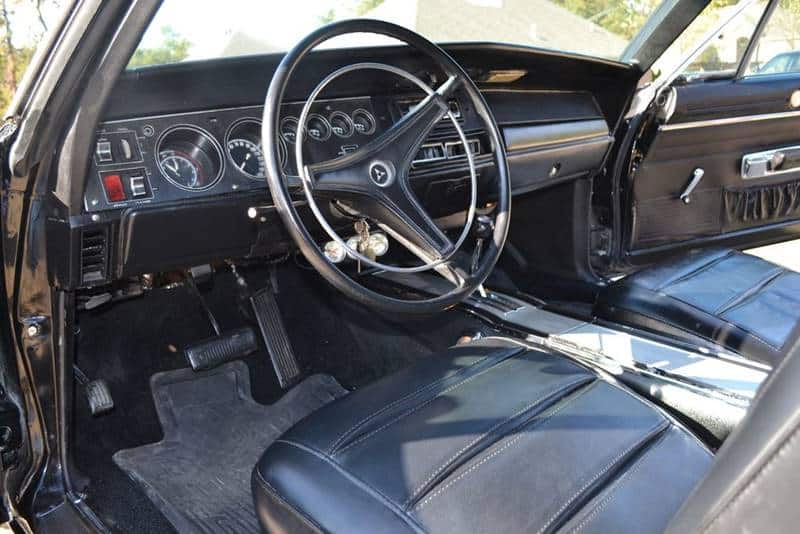
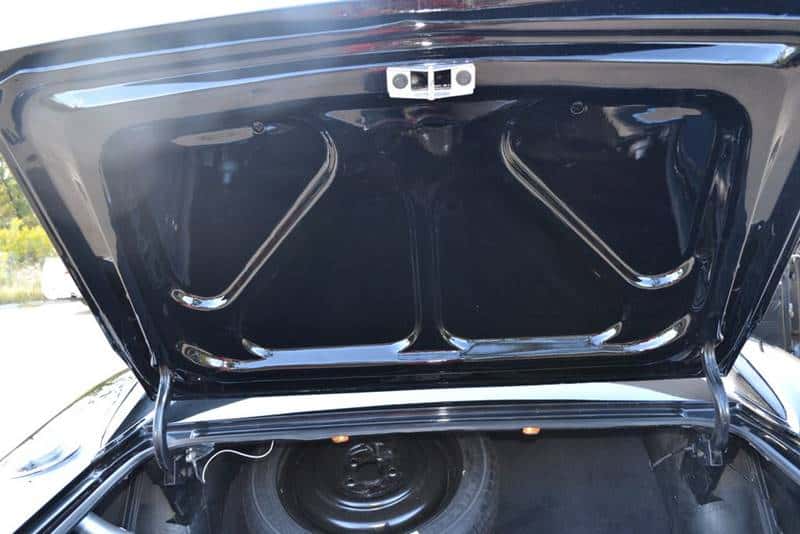
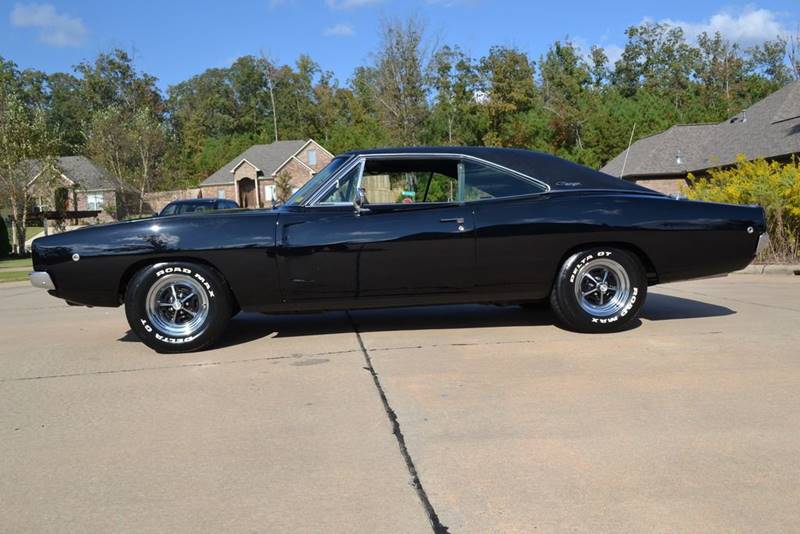
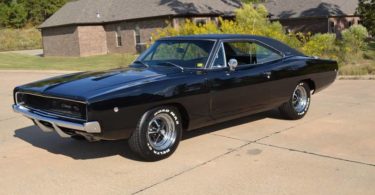
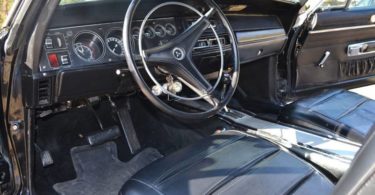
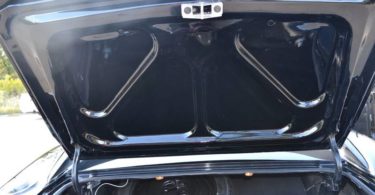
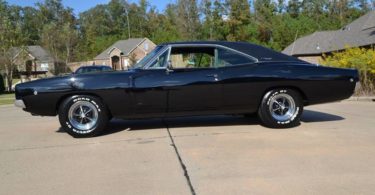

I had a 68 and my buddy had a 69 charger back in the day. We had a blast.